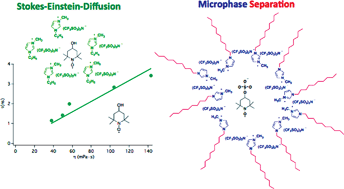Influence of imidazolium bis(trifluoromethylsulfonylimide)s on the rotation of spin probes comprising ionic and hydrogen bonding groups
Abstract
The influence of the alkyl chain length in 1-alkyl-3-methylimidazolium bis(trifluoromethylsulfonylimide)s is studied to explore the rotation of

- This article is part of the themed collection: Ionic Liquids

 Please wait while we load your content...
Please wait while we load your content...